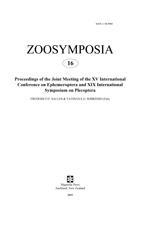Abstract
The insect order Ephemeroptera is the basal lineage of wing acquired insects (i.e. Pterygota), and is a key taxon in understanding the processes of insect diversification and phylogeny. Therefore, phylogenetic evolution and evolutionary developmental studies of this insect order have been desirable, but such studies have been delayed due to various barriers. One of the greatest factors is the difficulty of creating suitable captive breeding conditions and the difficulty of controlling mating and embryogenesis. Under such circumstances, however, we recently established a method to control fertilization and developmental initiation using a “hand-pairing” cross-breeding method. This method was established using Dipteromimus tipuliformis of the family Dipteromimidae, which is endemic to the Japanese Islands. In addition, in this study, it was revealed that the “hand-pairing” method was also effective in Ephemeridae and Baetidae, which are largely differentiated phylogenetically from the family Dipteromimidae. As such, it is considered that our established “hand-pairing” cross-breeding method is widely effective among mayflies. This is considered to be an important outcome that will contribute to future evolutionary developmental experiments on mayflies.

